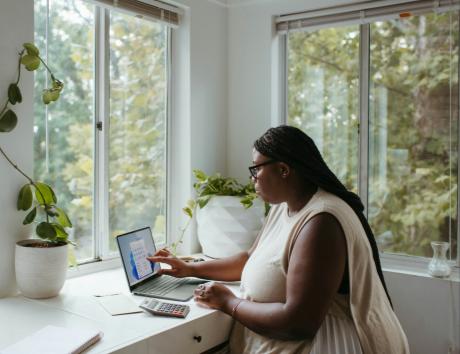How long should a cover letter be?
A cover letter is your opportunity to go beyond your resume and show how your skills, experience, and personal traits make you the ideal candidate for the job you’re applying for. Jobseeker offers guidance to help you decode employer preferences and guidelines so you can ensure that you get the length and content just right.

General cover letter guidelines
The length of a cover letter can vary by role and industry. For example, if a job description criteria or your lengthy list of experience and accomplishments warrant it, your cover letter may stretch to two pages.
However, as a general rule, you should aim to keep your cover letter to one page. This means your document should be concise and contain no more information than is necessary to meet company requirements and convey how your skills and experience make you a great fit.
One way to achieve a concise cover letter structure is to avoid rambling about yourself or what you’ve done. Instead, show a hiring manager your true value and impact by quantifying your accomplishments with numbers and figures. This can be as simple as stating the number of sales you’ve closed or how many customers you serve daily.
What do recruiters and employers prefer?
Knowing what recruiters and employers prefer when it comes to cover letter length is critical to making a good impression.
While cover letter articles can provide some general guidelines, it’s important to read the job posting thoroughly and note any employer-specific requirements for the cover letter, such as including testimonials or recommendations.
Doing this will help you choose the right cover letter length. It also has the added benefit of helping you articulate exactly how your skills and experience align with what the hiring manager is looking for.
It’s also a good idea to research the company to see if you can pick up on any specific preferences regarding cover letter length. For example, if you know any professional forums where current or former employees post, search for threads that mention what the company expects in an application package.
You can also research the company’s values to see if they hint at an ideal cover letter length. For example, an employer that prioritizes efficiency may not appreciate a lengthy cover letter.
If you’re unable to obtain clear guidelines using these methods, you can always call or email the hiring manager or recruiter and ask for clarification. This is always a better option than just guessing about the ideal cover letter length.
Expert Tip:
Differentiate your cover letter from your resume
Word count is not the only important aspect of a good cover letter. You must also make it a point to include relevant and useful content in all your application materials.
In order to do that, it’s critical that you differentiate your cover letter from your resume. Rather than simply rehashing what you’ve told the hiring manager about yourself in your resume, you should use your cover letter to talk about how your past job history has prepared you for the role you’re applying for.
You’ll also want to answer any questions a potential employer may have. This might include explaining why there’s a gap in your employment or why you want to make a career switch.
At the same time, you want to avoid making the mistake of only discussing how much you want the position and ensure that you make it clear how your skills and experience can provide value for the company.
The idea is to convey to the hiring manager what you bring to the table and how it will take the business to the next level. What impact will you have on the company if you’re hired? This is the question your cover letter should ultimately answer.
"Your document should be concise and contain no more information than is necessary to meet company requirements and convey how your skills and experience make you a great fit."
Always tailor your cover letter
One of the most important cover letter tips is to tailor your letter for the specific job you’re applying for.
Doing so will make it easier to adhere to all length guidelines and content requests in the job description. It also shows consideration for the hiring manager by signaling that you read the job posting thoroughly and cared enough to follow the directions it provided.
Moreover, tailoring your cover letter templates also helps you avoid redundancy. When you submit the same cover letter for every job, you don’t get the chance to list the reasons you would be a great fit for a particular company. As a result, you may come across as unenthusiastic or disinterested in the position.
It’s much more impactful to write about specific accomplishments and traits that relate to the job posting than it is to speak about yourself in a generalized way.
Finally, a customized cover letter better supports your resume, provided you’ve also tailored it for the position. You can take the opportunity to make critical connections for the hiring manager, addressing how your qualifications are a good match for the job description.
Make your letter visually striking
When it comes to making your cover letter stand out, don’t forget the visual aspect. Many people submit cover letters and resumes that are little more than words on a page. However, it doesn’t have to be this way.
You can make your cover letter visually interesting by choosing a well-designed template. If you decide to go this route, make sure the templates you use match the resume examples you went with. Even if you don’t use the exact same design, they should complement each other.
Matching your cover letter to your resume goes a long way toward capturing the attention of hiring managers and recruiters, as most people won’t put in the extra effort to do this.
As a bonus, choosing the right cover letter design and template will make your document easier to read. This is because your letter won’t appear as one big wall of text, which can cause the reader’s attention to waver.
Proofread and edit
Always read through your cover letter carefully before sharing or submitting it to catch potential typos, errors, or awkward constructions.
If you used any cover letter or resume templates, make sure you’ve customized all sections with your personal information. By doing so, you’ll come across as polished and avoid looking like you don’t care about professionalism.
If you have trouble editing your own work, consider asking a friend to read through your letter and note any errors or issues that jump out at them. They can also provide a fresh perspective on the length and tone of your letter to ensure that you’re portraying the image you want a potential employer to see.
The right cover letter length is essential for job-hunting success
How long should a cover letter be? The answer is as long as it takes to meet job description requirements, employer preferences, and professional norms. Sometimes, you might need two pages to check all these boxes. In most cases, however, you should limit it to one page.
Don't forget about your content while trying to find the right length. Make sure what you write is relevant to the specific job you’re applying for. Quantifying your achievements, proofreading prior to submission, and adding visual elements will also ensure that you come across as poised and impactful.
If you need help writing a great cover letter, consider using a template. Solid cover letter examples can help point you in the right direction regarding the ideal length. They’ll also give you a starting point from which you can craft a professional letter that will garner the right kind of attention from potential employers and recruiters.
Download a perfectly written cover letter
Write a cover letter step-by-step with our intuitive generator.



